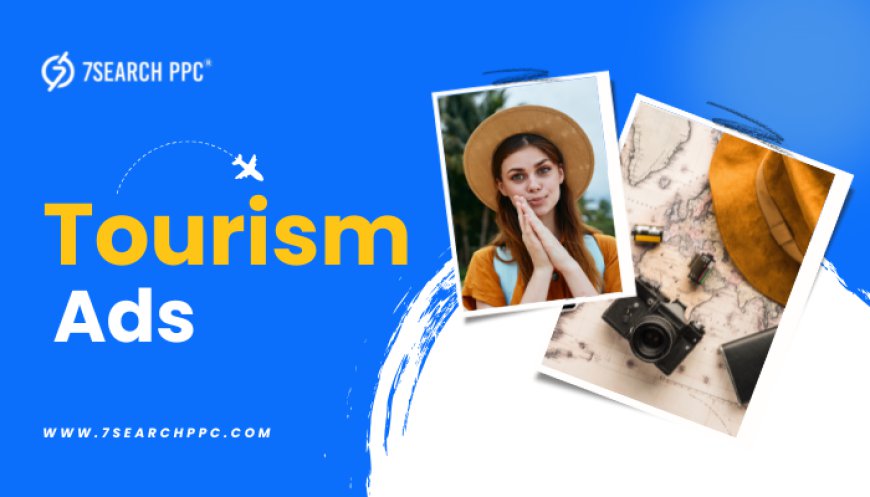Innovative Tourism Ads: Captivate and Engage Global Travelers in 2024

In today's fast-paced digital world, the tourism industry must adapt and innovate to capture the attention of global travelers. As we look toward 2024, it’s crucial for tourism advertising to evolve, utilizing fresh ideas and cutting-edge technologies. This blog explores innovative tourism advertising strategies that engage audiences, drive bookings, and enhance the overall travel experience.
The Importance of Innovative Tourism Advertising
In the tourism sector, standing out is more important than ever. With countless options available, potential travelers are bombarded with choices, making effective advertising essential. Innovative tourism advertising not only captures attention but also builds brand loyalty and drives conversions.
Benefits of Innovative Tourism Advertising
- Increased Visibility: Unique and creative ads enhance brand recognition.
- Engagement: Engaging ads resonate with potential travelers, encouraging interaction.
- Conversion Rates: Innovative approaches often lead to higher conversion rates, as they can persuade viewers to take action.
- Brand Loyalty: Captivating advertising fosters a deeper connection between travelers and brands, leading to repeat business.
Key Trends in Tourism Advertising for 2024
As we move into 2024, several trends are shaping the landscape of tourism advertising. Understanding these trends will help businesses create more effective campaigns.
Personalization at Scale
In an age where consumers expect tailored experiences, personalization has become a game-changer. Leveraging data analytics and artificial intelligence, tourism brands can create personalized ads that cater to individual preferences.
How to Implement Personalization:
- Dynamic Content: Use algorithms to display relevant offers based on users' browsing history.
- Targeted Campaigns: Segment your audience to deliver specific messages to different groups.
Interactive Ads
Interactive advertising encourages participation and engagement. By integrating elements like polls, quizzes, and augmented reality, brands can create memorable experiences that resonate with travelers.
Examples of Interactive Ads:
- Augmented Reality (AR): Allowing users to visualize destinations in their living spaces.
- Virtual Reality (VR): Offering immersive experiences of destinations, making them more appealing.
Sustainability Messaging
As travelers become more environmentally conscious, highlighting sustainability in tourism advertising is essential. Brands that prioritize eco-friendly practices can differentiate themselves and attract a loyal customer base.
Ways to Highlight Sustainability:
- Showcase Green Practices: Highlight initiatives like carbon offsetting, local sourcing, and waste reduction.
- Share Authentic Stories: Use storytelling to share how your brand positively impacts local communities and ecosystems.
User-Generated Content (UGC)
Incorporating user-generated content can enhance credibility and authenticity. Travelers are more likely to trust peer recommendations than traditional advertising.
How to Leverage UGC:
- Social Media Campaigns: Encourage travelers to share their experiences with a specific hashtag.
- Contests: Host contests inviting users to submit photos or videos showcasing their adventures.
Influencer Collaborations
Influencer marketing continues to be a powerful tool in travel advertising. Collaborating with influencers who align with your brand values can extend your reach and lend authenticity to your campaigns.
Best Practices for Influencer Collaborations:
- Choose Relevant Influencers: Select influencers whose audience aligns with your target market.
- Create Authentic Partnerships: Collaborate on campaigns that feel genuine and resonate with both the influencer’s and your brand’s values.
Creating Effective Tourism Ads
To create effective tourism ads that captivate and engage global travelers, consider the following strategies:
Compelling Storytelling
Storytelling is a potent tool in advertising. It allows brands to connect emotionally with their audience, making the message more relatable and memorable.
Tips for Effective Storytelling:
- Know Your Audience: Understand what resonates with your target demographic.
- Create Relatable Characters: Use characters that your audience can connect with.
- Use Visuals: Enhance your story with captivating images and videos that showcase the destination.
Utilizing High-Quality Visuals
In tourism advertising, visuals are paramount. Stunning imagery and videos can transport viewers to exotic destinations and ignite their wanderlust.
Best Practices for Visual Content:
- Invest in Professional Photography: High-quality images can significantly impact engagement.
- Showcase Real Experiences: Use visuals that depict authentic travel experiences, rather than stock images.
Utilizing Social Proof
Social proof, such as reviews and testimonials, can significantly influence potential travelers' decisions. Highlighting positive experiences from past travelers can build trust and encourage bookings.
How to Utilize Social Proof:
- Display Reviews: Feature positive reviews prominently on your website and ads.
- Share Case Studies: Highlight successful trips and satisfied customers through detailed case studies.
Conclusion
As the tourism industry evolves, innovative tourism advertising will play a crucial role in engaging global travelers in 2024. By leveraging personalization, interactive content, sustainability messaging, user-generated content, and influencer collaborations, tourism brands can create impactful campaigns that resonate with their audience.
Embracing these trends and strategies will not only enhance visibility but also drive engagement and ultimately increase bookings. As competition grows, the brands that prioritize innovative tourism advertising will stand out, ensuring they attract and retain customers in a crowded marketplace.
Frequently Asked Questions(FAQs)
What is tourism advertising?
Ans. Tourism advertising refers to promotional activities and campaigns aimed at attracting travelers to specific destinations, services, or experiences.
Why is personalization important in tourism advertising?
Ans. Personalization allows brands to tailor their messages to individual preferences, increasing relevance and engagement, leading to higher conversion rates.
How can user-generated content enhance tourism advertising?
Ans. User-generated content provides authenticity and credibility, as potential travelers often trust peer recommendations over traditional advertising.
What role do influencers play in tourism advertising?
Ans. Influencers can extend a brand's reach and enhance credibility by sharing authentic experiences with their audience, making tourism advertising more relatable.
How can sustainability be integrated into tourism advertising?
Ans. Brands can highlight their eco-friendly practices and share stories about their positive impact on communities and the environment to appeal to environmentally conscious travelers.
